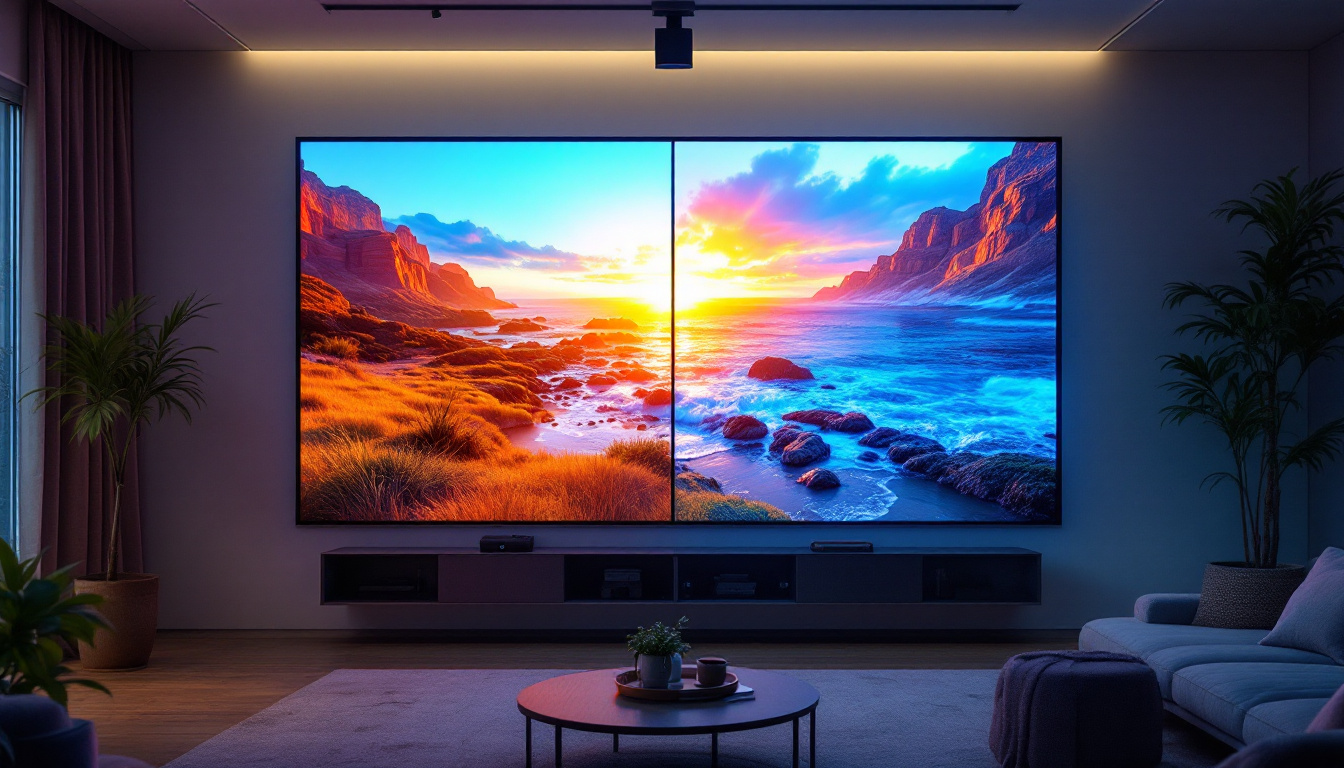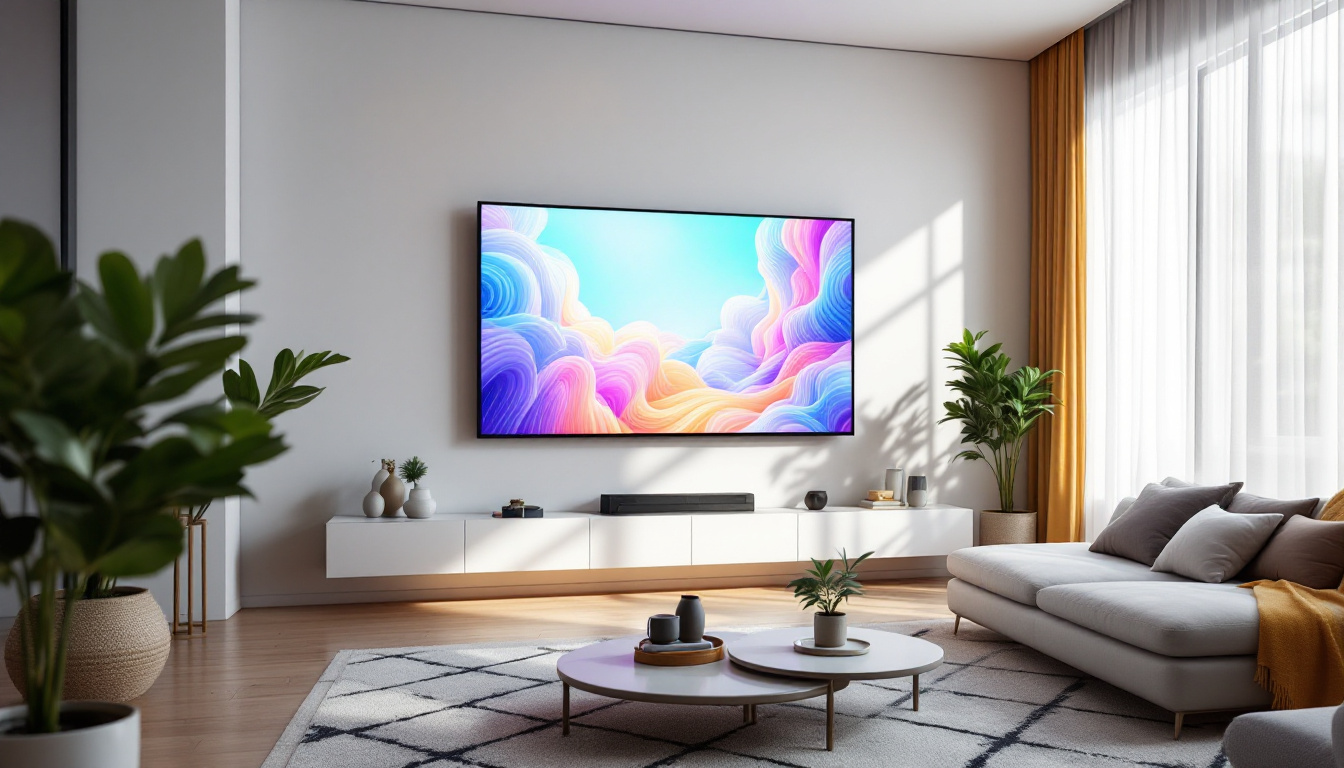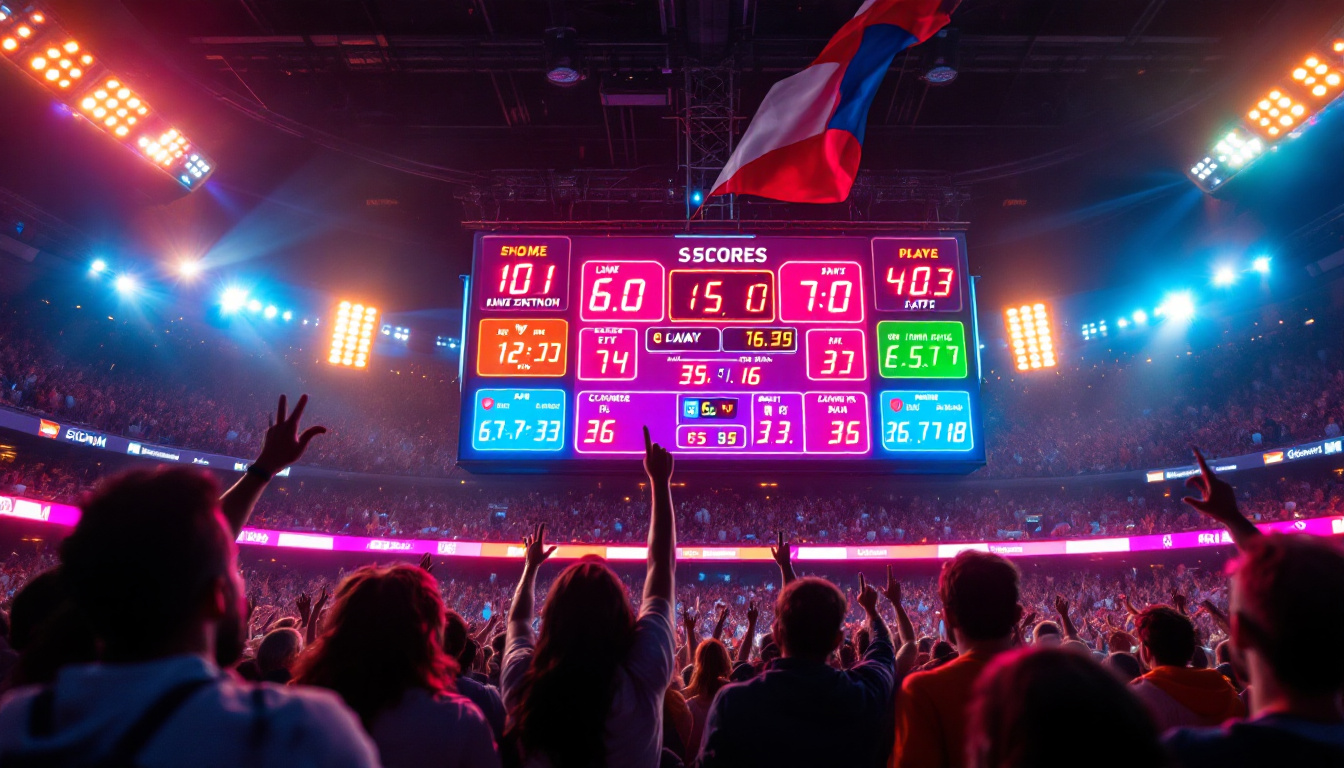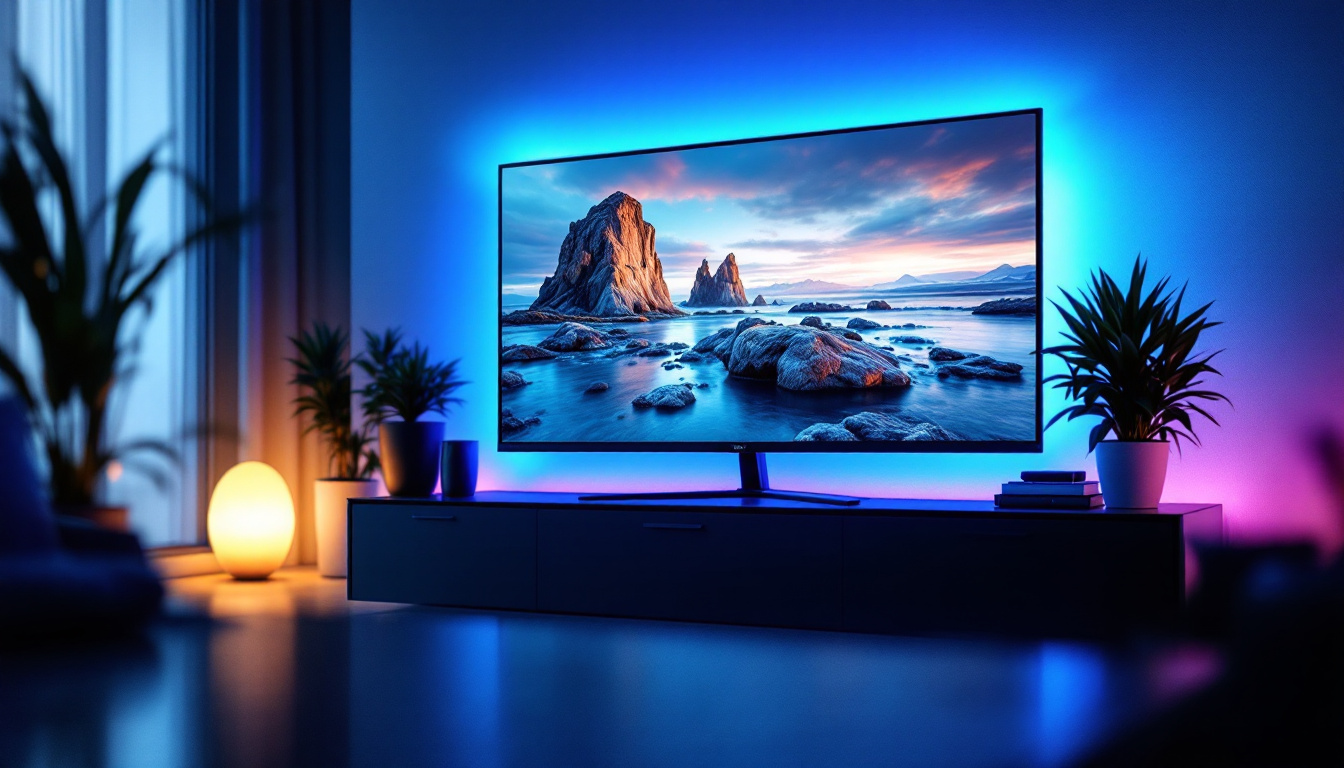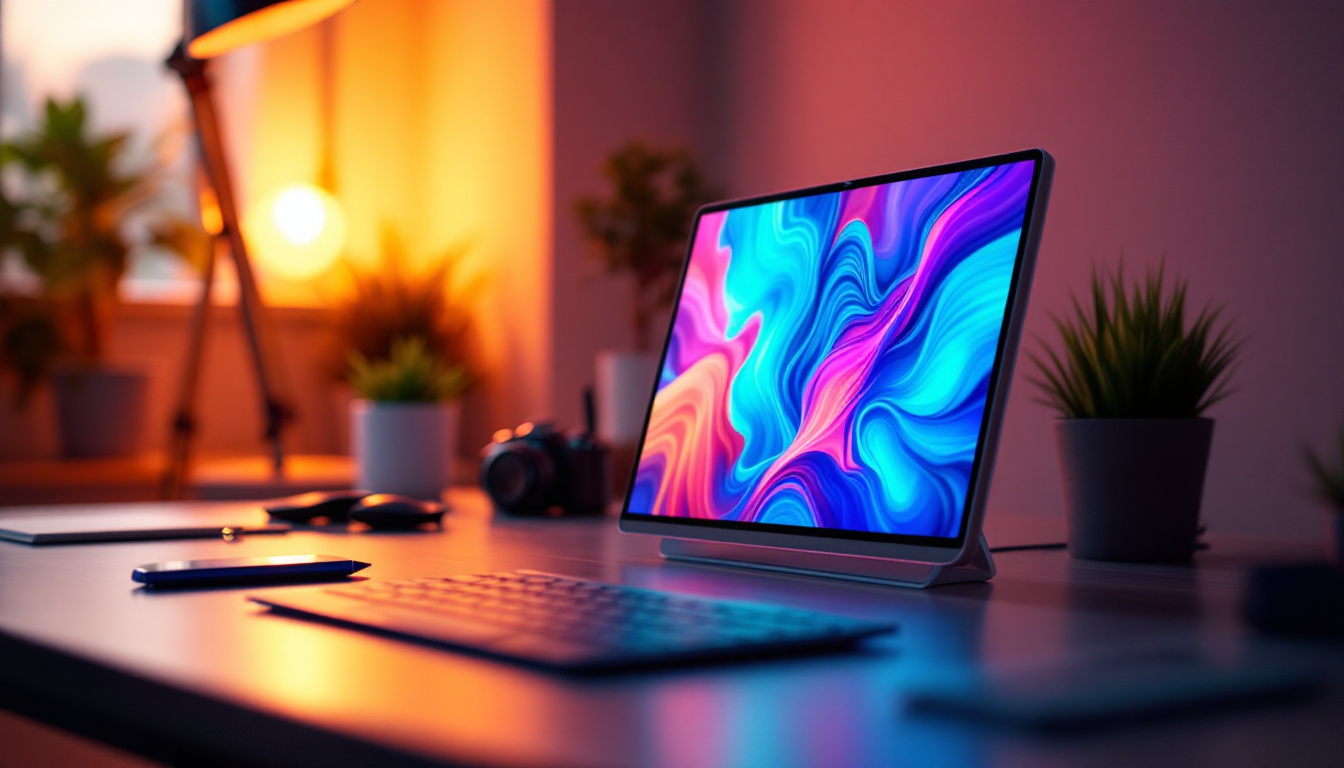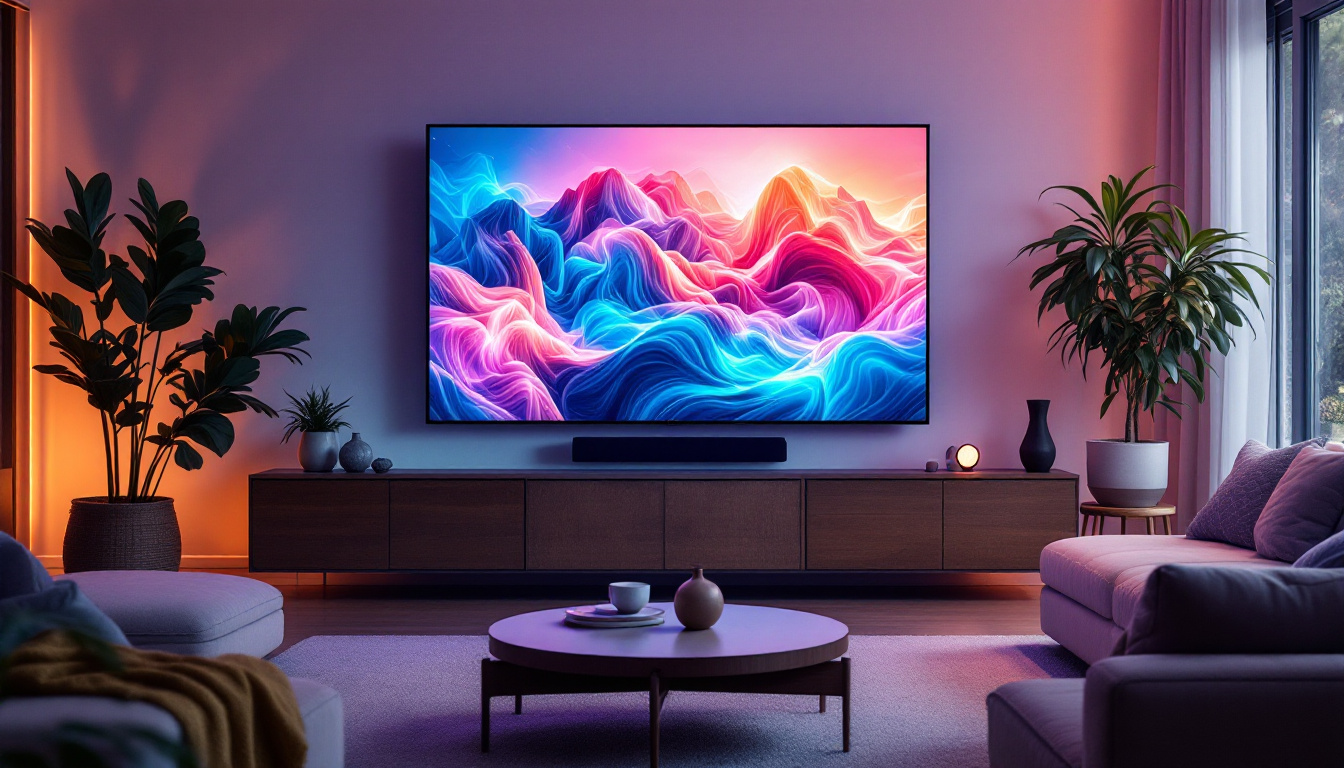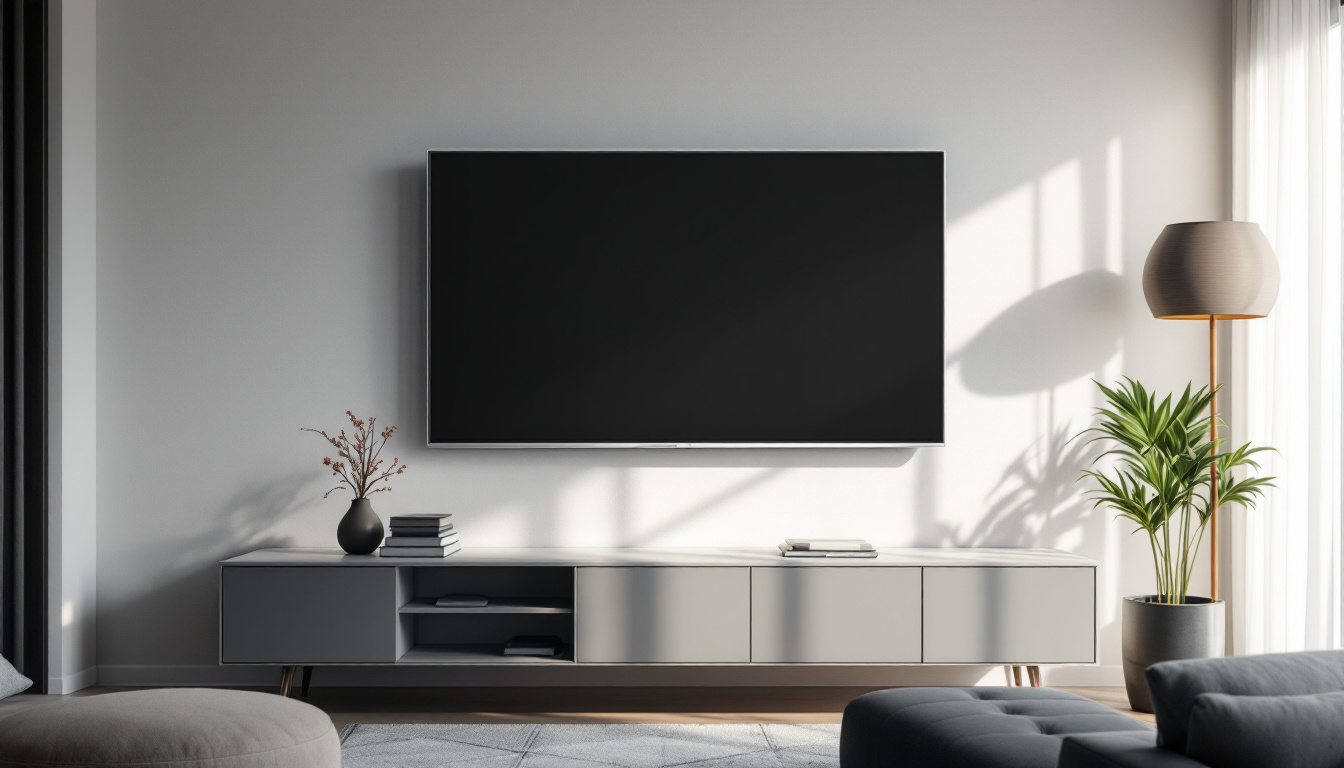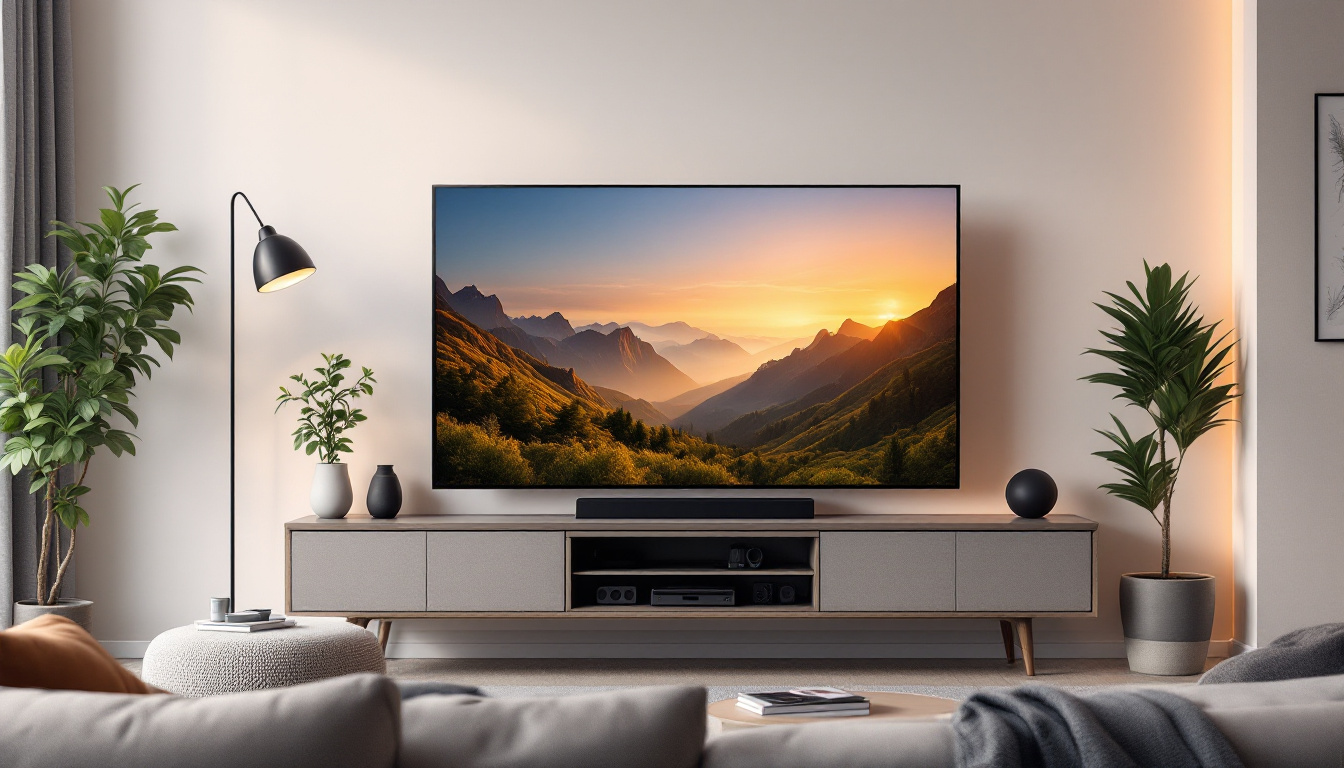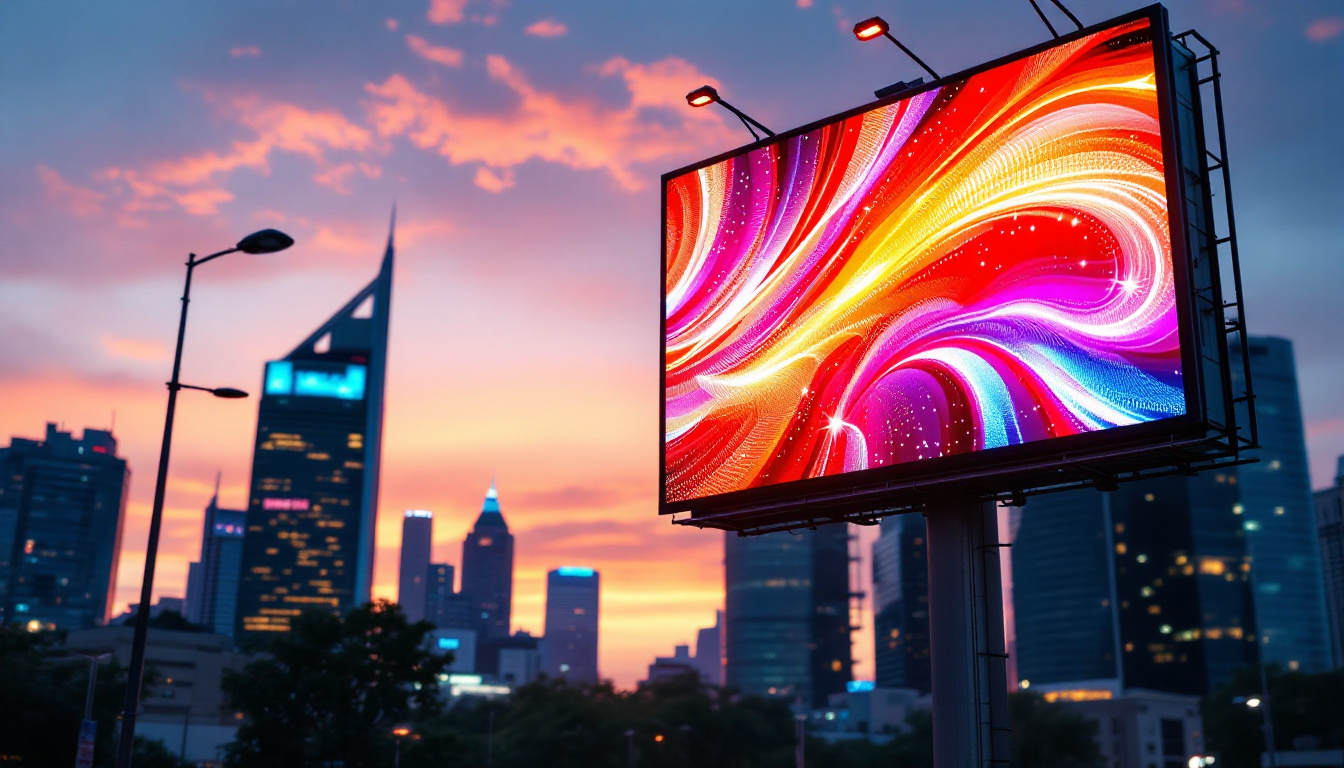In the realm of visual presentations and home entertainment, the choice between using a projector screen or a wall can significantly impact the quality of the viewing experience. With advancements in technology, particularly with the rise of LED displays, understanding the differences and advantages of each option becomes crucial for consumers and professionals alike. This article delves into the intricacies of projector screens and walls, while also exploring the capabilities of LED displays.
Understanding Projector Screens
Projector screens are specifically designed surfaces that enhance the projection of images and videos. These screens come in various types, sizes, and materials, each tailored for specific environments and purposes. The choice of a projector screen can significantly influence the overall viewing experience, making it essential for users to understand the options available to them.
Types of Projector Screens
There are several types of projector screens available, each catering to different needs. The most common types include:
- Fixed Frame Screens: These are permanently mounted screens that provide a taut surface for projection. They are ideal for dedicated home theaters, offering a sleek and professional appearance that enhances the aesthetic of the room.
- Retractable Screens: These screens can be pulled down when needed and retracted when not in use, making them perfect for multi-purpose rooms. Their versatility allows homeowners to maintain a clean look when the screen is not in use.
- Portable Screens: Designed for ease of transport, these screens are lightweight and can be set up quickly, making them suitable for presentations on the go. Many portable screens come with carrying cases, making them ideal for business professionals who frequently travel.
Each type of screen has its own set of advantages, and the choice often depends on the intended use, space, and budget. For instance, while fixed frame screens are excellent for a permanent setup, retractable and portable options provide flexibility for those who may need to adjust their viewing environment frequently.
Material Matters
The material of a projector screen plays a significant role in image quality. Common materials include:
- Matte White: Offers excellent color accuracy and is versatile for various lighting conditions. This material is often favored for home theaters and classrooms where ambient light can vary.
- High Gain: Reflects more light, making it suitable for bright environments, but may have a narrower viewing angle. This type of screen is particularly beneficial in rooms with strong overhead lighting.
- Ambient Light Rejecting (ALR): Designed to minimize the impact of ambient light, these screens are perfect for rooms with significant natural light. They utilize advanced technology to ensure that projected images remain vivid even in well-lit spaces.
Choosing the right material is essential to ensure that the projected images are vibrant and clear, regardless of the surrounding conditions. Additionally, some screens come with specialized coatings that enhance contrast and reduce glare, further improving the viewing experience.
Benefits of Using Projector Screens
Projector screens offer several advantages that can enhance the viewing experience:
- Image Quality: Screens are engineered to reflect light optimally, resulting in sharper images and better color reproduction. This is particularly important for cinematic experiences, where detail and clarity can make a significant difference.
- Dedicated Viewing Experience: A projector screen creates a focused viewing area, reducing distractions from surrounding walls and furniture. This dedicated space allows viewers to immerse themselves fully in the content being presented.
- Versatility: Screens can be used in various settings, from home theaters to conference rooms, adapting to different needs. Their adaptability makes them a valuable tool for educators, business professionals, and home entertainment enthusiasts alike.
Overall, the use of a projector screen can elevate the quality of presentations and entertainment, making it a worthwhile investment for many users. Furthermore, with advancements in technology, many modern screens now feature enhanced durability and easy maintenance, ensuring that they remain in excellent condition for years to come. Whether for a casual movie night or a professional presentation, the right projector screen can significantly enhance the overall experience, making it an essential component of any projection setup.
The Wall as a Projection Surface
Using a wall as a projection surface is a common alternative to traditional projector screens. While it may seem like a convenient option, there are several factors to consider.
Advantages of Projecting on a Wall
There are notable benefits to using a wall for projection:
- Cost-Effective: Utilizing an existing wall eliminates the need for purchasing a separate screen, making it a budget-friendly option.
- Space-Saving: In smaller spaces, a wall can serve as a dual-purpose area for both projection and regular use without taking up additional room.
- Size Flexibility: Walls can accommodate larger projections, providing a more immersive experience without the limitations of screen size.
While these advantages make walls an appealing choice, there are also challenges to consider.
Challenges of Using a Wall
Despite the benefits, projecting onto a wall can present several challenges:
- Surface Quality: Not all walls are created equal. Textured or uneven surfaces can distort images, leading to a less than ideal viewing experience.
- Color and Brightness: Walls typically do not reflect light as effectively as screens, which can result in duller colors and lower brightness levels.
- Ambient Light Issues: Walls may not have the same ambient light rejection capabilities as specialized screens, making them less effective in brightly lit rooms.
These challenges can significantly impact the overall quality of the projected image, making it essential to weigh the pros and cons carefully.
LED Displays: A Modern Alternative
With the evolution of technology, LED displays have emerged as a powerful alternative to traditional projection methods. These displays offer unique advantages that can enhance the viewing experience.
What is an LED Display?
An LED (Light Emitting Diode) display is a flat panel display that uses LEDs to produce images. Unlike traditional projectors, which rely on projecting light onto a surface, LED displays emit light directly from the screen, resulting in vibrant colors and sharp images.
Advantages of LED Displays
LED displays come with a myriad of benefits, making them a popular choice for both commercial and residential applications:
- Brightness and Clarity: LED displays are known for their high brightness levels, making them suitable for various lighting conditions without sacrificing image quality.
- Color Accuracy: The ability to produce a wide color spectrum ensures that images appear more lifelike and vibrant.
- Durability: LED displays are typically more durable than projector screens and walls, with a longer lifespan and less susceptibility to wear and tear.
These advantages make LED displays particularly appealing for environments where image quality is paramount.
Considerations for LED Displays
While LED displays offer many benefits, there are also considerations to keep in mind:
- Cost: LED displays can be more expensive upfront compared to projector screens and walls, which may be a limiting factor for some consumers.
- Viewing Angles: Depending on the model, some LED displays may have limited viewing angles, which can affect the experience for larger groups.
- Installation: Setting up an LED display may require professional installation, adding to the overall cost and complexity.
Understanding these considerations is essential for making an informed decision about whether to invest in an LED display.
Comparative Analysis: Projector Screens, Walls, and LED Displays
When deciding between projector screens, walls, and LED displays, it’s crucial to consider various factors, including image quality, cost, and intended use.
Image Quality
Image quality is often the most significant factor in choosing a projection method. Projector screens are designed for optimal light reflection, providing sharp images with accurate colors. Walls, on the other hand, may not offer the same quality due to surface imperfections and color absorption. LED displays excel in brightness and color accuracy, making them a top choice for high-quality visuals.
Cost Considerations
Cost is a critical factor for many consumers. Projector screens can range from budget-friendly options to high-end models, while walls are essentially free if an existing surface is available. LED displays typically require a higher initial investment, but their longevity and low maintenance costs can offset this over time.
Use Case Scenarios
The intended use of the display is another essential consideration. For dedicated home theaters, a fixed-frame projector screen may provide the best experience. In contrast, for casual viewing or presentations, a wall may suffice. LED displays are ideal for environments where high-quality visuals are paramount, such as in commercial settings or professional presentations.
Conclusion: Making the Right Choice
Choosing between a projector screen, a wall, or an LED display ultimately depends on individual needs and preferences. Each option has its unique advantages and challenges, and understanding these factors is crucial for making an informed decision.
For those seeking the best image quality and dedicated viewing experiences, projector screens or LED displays may be the most suitable choices. Conversely, if budget constraints or space limitations are significant factors, using a wall could be a practical solution.
Ultimately, the decision should align with the specific requirements of the viewing environment, ensuring that the chosen method enhances the overall experience, whether for entertainment, education, or professional presentations.
Discover the Future of Visual Experience with LumenMatrix
Ready to elevate your visual presentations to new heights? LumenMatrix is at the forefront of LED display technology, offering a wide array of innovative solutions that cater to your every need. From immersive Indoor LED Wall Displays to dynamic Outdoor LED Wall Displays, and from versatile Vehicle LED Displays to engaging LED Sports Displays, LumenMatrix has the perfect solution to transform your space into a captivating visual spectacle. Embrace the future of visual communication and check out LumenMatrix LED Display Solutions today to create unforgettable experiences and share your message with unparalleled impact and clarity.

